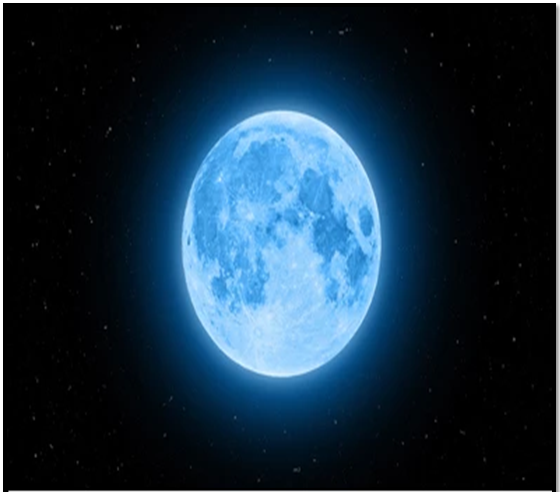BLUE MOON: A BALEFUL SEQUELA?
Why in the news?
The article explores the concept of the “blue moon,” examining its scientific and cultural significance.
Key Details
- Blue Moon Definition: The term “blue moon” usually refers to the second full moon in a calendar month. However, the word can also refer to the unusual event in which the moon appears bluish as a result of special atmospheric conditions, such as volcanic eruptions that emit particles into the atmosphere.
- Scientific explanation: A blue moon is often created by particles in the atmosphere that are slightly larger than the wavelength of red light, allowing blue light to pass through. These phenomena can result from volcanic eruptions, large-scale fires, or dust storms.
- Historical Events:
- The 1815 Mt. Tambora eruption: In Indonesia, it was one of the most intense ever recorded. The following year, 1816, was dubbed the “Year Without a Summer” due to the dip in global temperature induced by volcanic ash in the sky.
- Krakatoa Eruption (1883): Another major eruption, Krakatoa’s ash cloud caused global temperature anomalies and was responsible for blue moons seen in numerous regions of the world.
- Cultural Significance: The expression “once in a blue moon” has become synonymous with uncommon occurrences. The word became popular in the nineteenth century and has appeared in literature, music, and folklore.
- Astronomical Data: A blue moon happens around every 2.5 years. The next blue moon is predicted in August 2024.




